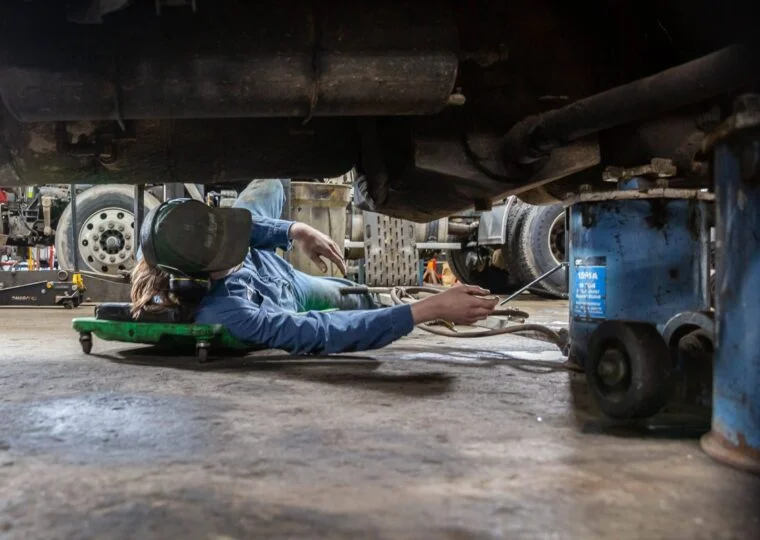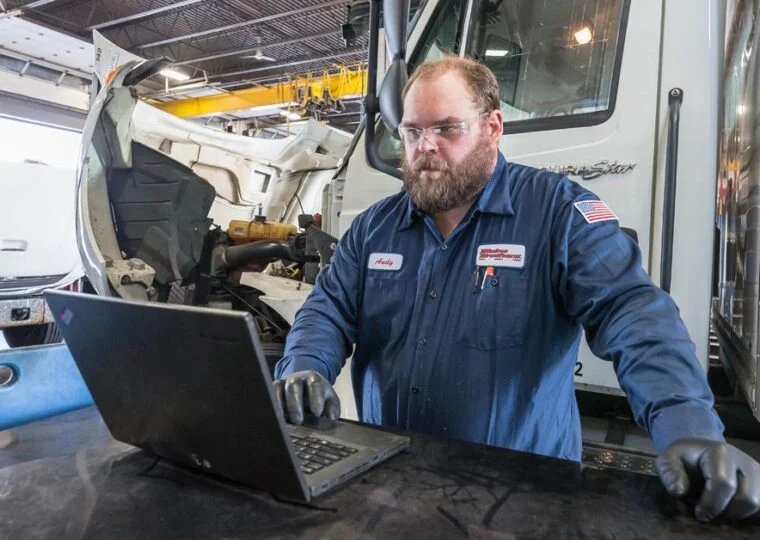 Preventative maintenance will help you be more productive
Preventative maintenance will help you be more productiveIt’s just about impossible to hit the road in Minnesota and across the country and not see dozens of commercial trucks out there delivering the items so many of us rely on in our everyday lives while providing a much-needed boost to our nation’s economy.
The numbers back it up, too. According to American Trucking Associations , trucks move nearly 75 percent of the nation’s freight by weight, bringing in more than $732 billion in gross freight revenues in 2020 alone. There were more than 38 million trucks registered and used for business purposes in 2019, making it no surprise that commercial trucks make up 14.4 percent of all registered vehicles.
With all these commercial vehicles on the road traveling hundreds of billions of miles each year, there are bound to be accidents, some of which can have tragic outcomes.
In 2019, 118,000 large trucks were involved in crashes resulting in an injury. Just over 5,000 were involved in fatal accidents. Then there are all the other minor incidents that occur on highways across the country that may not cause physical harm but can lead to missed delivery deadlines, high repair costs and overall frustration for operators and fleet managers.
While there’s no way to prevent every accident from happening, developing a robust preventative fleet maintenance checklist for semi-trucks is your best bet for staying safe while you’re on the road.
Learn more about Blaine Brothers fleet maintenance services in Minnesota and Wisconsin.
Why exactly is commercial truck maintenance so critical? Well, for just about every reason you could possibly imagine. By being proactive in taking care of your commercial trucks, not only will they last longer but they’ll also be safer to operate, both of which will help contribute to your company’s bottom line.
We’ll break down a few of the top reasons why you should implement a preventative maintenance program for your commercial vehicles:
When you’re driving a vehicle that can weigh more than 33,000 pounds, the last thing you want is to get into an accident. Trucks that get regular maintenance are less likely to be plagued by dangerous issues like brake failure or engine troubles that can contribute to the likelihood of crashing and causing harm to both the driver and anyone else who might be nearby.
 Preventative maintenance will help you be more productive
Preventative maintenance will help you be more productiveIn the trucking and transportation industry, the strength of your reputation will make or break you and when your vehicles are sidelined due to mechanical problems, you run the risk of missing important deliveries.
That never reflects well on you, especially when you’re working with a new customer. A commercial vehicle maintenance program will help ensure your fleet is ready to roll so your productivity – and your profitability – won’t suffer.
Commercial vehicles go through frequent inspections on both the state and federal level and if even one part is out of place or not functioning properly, it can mean hefty fines, not to mention time spent off the road to fix the problem.
By creating and using a preventative maintenance checklist, you’ll be better prepared for every inspection and less likely to experience any unpleasant surprises.
You know the old saying “you have to spend money to make money,” right? It applies to many things in life and it also holds true in the trucking and transportation industry. Even though it’ll cost you some cash upfront, paying for a preventative maintenance program is far more affordable than having to deal with constant emergency repairs which can add up fast.
Plus, aside from the cost of repairs, vehicles that aren’t well maintained don’t run efficiently, meaning that they’re more expensive to operate and that can really cut into your profits over time.
Need truck repair? Blaine Brothers semi truck repair shops in Minnesota and Wisconsin help you get back on the road.
Developing a preventative maintenance checklist is the best way to ensure that each commercial vehicle in your fleet is in good working condition and ready to hit the road safely. Your list should not only include the items that need to be regularly checked but also a schedule for when these tasks should be completed so nothing falls through the cracks.
A good place to start is with a comprehensive evaluation of all your vehicles. By collecting service records and owner’s manuals and combining them with real-time stats such as mileage, tire pressure and odometer readings, you’ll get a pretty good idea of the health of the vehicle and the things you need to do to keep it running smoothly for years to come.
Here are some general items to put on your preventative maintenance checklist with more details on how to schedule them in the next sections:
 Mileage-based maintenance checklist
Mileage-based maintenance checklistThere are a number of ways fleet managers determine when to do maintenance, but basing it on mileage is one of the most common. Your vehicle’s owner’s manual should provide a guide to which services need to be completed and how often, though it’s always a good idea to use your own observations – and those of your operators – to come up with a schedule that makes the most sense.
For additional guidance, check out these recommendations from the State of Utah’s Department of Administrative Services Division of Fleet Operation:
Every 10,000 miles:
At 30,000, 90,000, 60,000, 90,000, 120,000 and 180,000 miles:
At 150,000 miles:
At 60,000, 120,000 and 180,000 miles:
Mileage isn’t the only factor to consider when creating your maintenance checklist. The weather can and should influence the types of maintenance you do and when exactly you should be performing it.
First, let’s talk about winter. In Minnesota and the rest of the Midwest, where temperatures drop dramatically and snow and ice are common, it’s important to make sure your vehicles are protected, especially the parts that are exposed to the elements. If you don’t, you could end up significantly diminishing the life of your vehicle – no one wants to do that!
Here’s what you should focus on during the cold winter months:
Driving through Minnesota? Learn more about common wintertime semi truck issues.
On the other end of the spectrum, you’ve got summer and even though it’s much more pleasant to be outside when it’s warm, the heat and dry weather can pose their own challenges when it comes to upkeep. This is the time of year where your maintenance activities will center on keeping your cooling system and engine in good working order.
Additionally, you’ll need to monitor the condition of your tires weekly as hot summer air can impact the consistency of tire pressure.
Your summer preventative maintenance checklist should include:

If you’re looking to create a solid commercial vehicle maintenance program, Blaine Brothers has you covered 100 percent. Thanks to our 40-plus years serving the trucking and transportation industry in Minnesota and Wisconsin, we have the expertise to help you develop a comprehensive plan for protecting your fleet and we won’t charge you an arm and a leg to do it. Why? Because to us, it’s not about the money – it’s about supporting our customers on every mile of their journey.
We consider our customers a part of our family and when they succeed, we all win. Contact the fleet maintenance professionals at Blaine Brothers today to find out how we can help you tackle all the items on your commercial vehicle maintenance checklist so you can keep on trucking.
10011 Xylite Street NE
Minneapolis, MN 55449